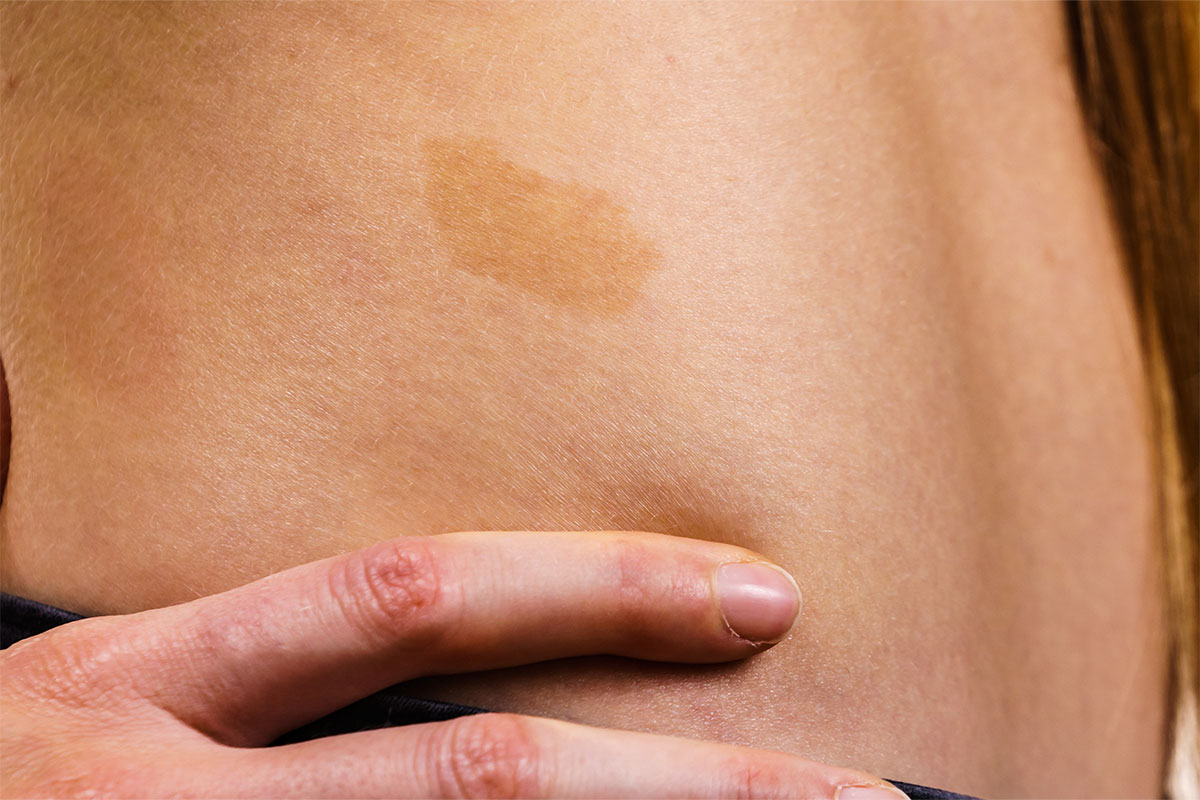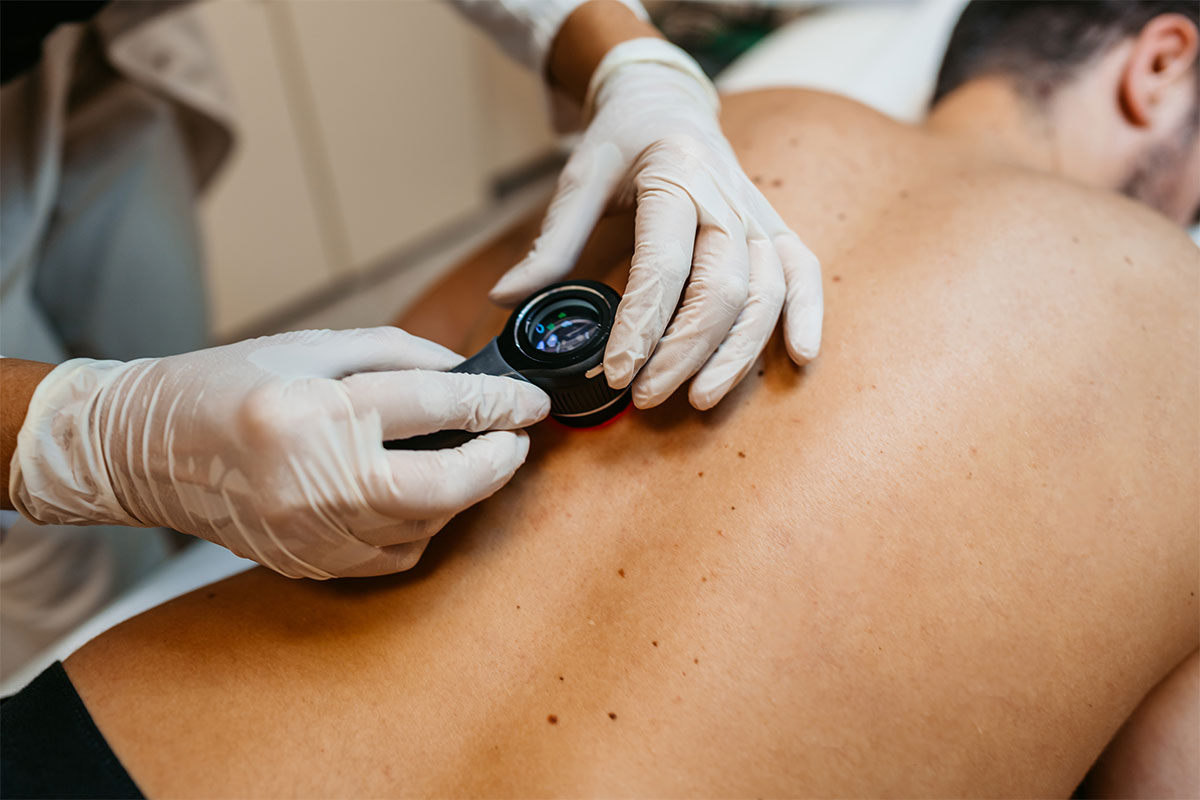Congenital birthmarks can vary from small pigmented spots to large masses that affect the skin, nerves, or deeper tissues, sometimes causing pain, disfigurement, or functional challenges. Led by Dr. Waner and Dr. O, Vascular Birthmark Institute offers expert diagnosis and treatment for congenital birthmarks in NYC to help patients achieve the best possible outcomes.
What Are Congenital Birthmarks?
Congenital birthmarks are lesions or tumors present at birth that affect the skin, nerves, or deeper tissues. They can range from harmless pigmented spots to complex masses that may cause disfigurement, functional impairment, or health complications. Unlike simple surface marks, congenital birthmarks can involve multiple layers beneath the skin. At Vascular Birthmark Institute, our team, led by Dr. Waner and Dr. O, specializes in identifying the type, extent, and potential risks of these birthmarks to create personalized treatment plans.

Signs & Symptoms of Congenital Birthmarks:
- Pigmented or discolored patches on the skin present at birth
- Raised lesions or lumps beneath or on the skin
- Rapid growth of a mass during infancy or childhood
- Changes in texture, including thickening or softening of the skin
- Pain, tenderness, or sensitivity in the affected area
- Functional impairments, such as limited movement or nerve involvement
- Cosmetic concerns or visible disfigurement
- Ulceration, bleeding, or infection in more severe cases
Types of Congenital Birthmarks
Congenital Lipomatosis
Congenital lipomatosis is a rare condition marked by an abnormal overgrowth of fatty tissue present at birth. At the Vascular Birthmark Institute, where we specialize in treating congenital birthmarks in NYC, we understand that this condition can affect muscles, nerves, and bones, potentially leading to facial asymmetry, disfigurement, or functional challenges, depending on the severity and location.
Neurofibromatosis
Neurofibromatosis is a genetic disorder that causes tumors to form on nerve tissue, often manifesting as skin lesions at birth or early childhood. These can be small and superficial or grow deeper and larger, leading to complications such as pain, neurological issues, or cosmetic concerns. There are different types of neurofibromatosis, each varying in severity.
Pigmented Nevus
A pigmented nevus, commonly called a mole, is a birthmark made up of an overgrowth of pigment-producing cells called melanocytes. These lesions range from small, flat spots to large, raised growths. Some pigmented nevi are purely cosmetic concerns, while others may carry a small risk of developing into skin cancer over time.
Non-Pigmented Nevus
Non-pigmented nevi are congenital birthmarks that lack coloration but still appear as noticeable growths or lesions on the skin. These can vary in size and texture and may sometimes blend into the surrounding skin, making them harder to detect. While generally benign, non-pigmented nevi can occasionally cause cosmetic concerns or become irritated.
Plexiform Neurofibromas
Plexiform neurofibromas are complex, benign tumors arising from multiple nerve bundles and are typically associated with NF1. These tumors often develop deep under the skin and can grow extensively, affecting nearby tissues, bones, and organs. Depending on their size and location, plexiform neurofibromas may cause disfigurement, pain, or neurological problems.
Treatments for Congenital Birthmarks in NYC
At Vascular Birthmark Institute, we understand that each case of congenital birthmarks in NYC is unique, which is why we personalize every treatment plan to your specific needs. During your consultation, we’ll perform a thorough evaluation—often including imaging studies—to determine the type, depth, and impact of the lesion. Based on your diagnosis, we’ll carefully discuss all available treatment options to ensure the best medical and cosmetic outcomes.

Surgical Excision
Surgical excision involves carefully removing the birthmark or tumor through a precise surgical procedure. If your lesion is superficial or localized, we may be able to completely remove it with minimal scarring. For deeper or more complex lesions, surgery may be performed in stages to ensure optimal cosmetic results. Our surgeons use advanced reconstructive techniques to restore the appearance and function of the affected area whenever necessary.
Laser Therapy
Laser therapy uses highly concentrated beams of light to target abnormal blood vessels, pigment cells, or soft tissue within a birthmark. Depending on the characteristics of your lesion, different types of lasers may be used. Laser energy selectively destroys unwanted tissue while sparing surrounding healthy skin, gradually fading or flattening the birthmark over several treatments. This method is particularly effective for pigmented and vascular lesions.
Medication Management
In some cases, medications may be prescribed to slow the growth of or shrink certain types of birthmarks and tumors. For example, beta-blockers like propranolol can reduce the size of vascular tumors, while other medications may help control the symptoms of neurofibromatosis or infiltrating lipomatosis. We will carefully tailor your medications to maximize effectiveness while minimizing side effects and closely monitor your progress throughout treatment.

Schedule Your Consultation
Vascular Birthmark Institute is dedicated to providing expert, compassionate care for patients with congenital birthmarks in NYC. Led by Dr. Waner and Dr. O, our team offers innovative diagnostics and personalized treatment plans to improve both health and appearance. We understand the physical and emotional impact congenital birthmarks can have and are committed to helping you or your child achieve the best possible outcome. If you’re seeking specialized care, contact our New York office to schedule your consultation.
Contact Vascular Birthmark Institute Today